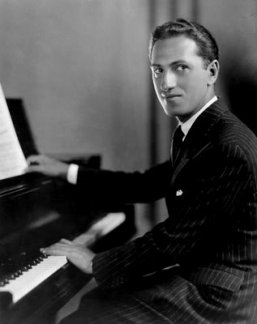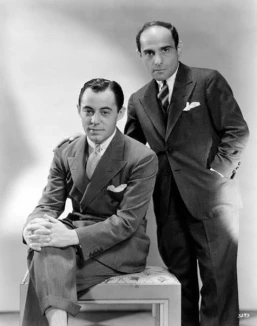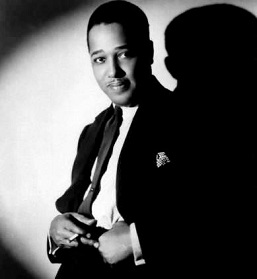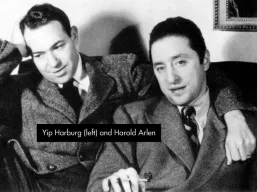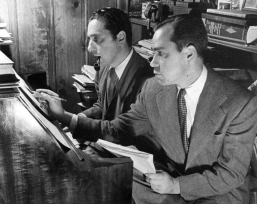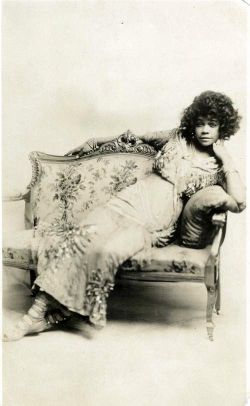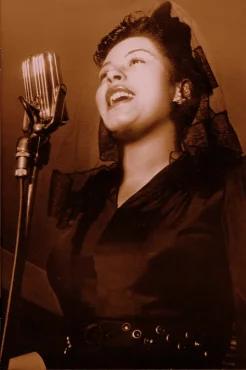Swanee – selected early recordings, 1919-1920
________________________________
- See also our George and Ira Gershwin feature page index.
________________________________
Swanee (m. George Gershwin, w. Irving Caesar)
from Wikipedia (image added):
“Swanee” is an American popular song written in 1919 by George Gershwin, with lyrics by Irving Caesar. It is most often associated with singer Al Jolson.
The song was written for a New York City revue called Demi-Tasse, which opened in October 1919 in the Capitol Theater. Caesar and Gershwin, who was then aged 20, claimed to have written the song in about ten minutes riding on a bus in Manhattan, finishing it at Gershwin’s apartment. It was written partly as a parody of Stephen Foster‘s “Old Folks at Home“. It was originally used as a big production number, with 60 chorus girls dancing with electric lights in their slippers on an otherwise darkened stage.[1]
The song had little impact in its first show, but not long afterwards Gershwin played it at a party where Al Jolson heard it. Jolson then put it into his show Sinbad, already a success at the Winter Garden Theatre, and recorded it for Columbia Records in January 1920.[2] “After that”, said Gershwin, “Swanee penetrated the four corners of the earth.” The song was charted in 1920 for 18 weeks holding the No. 1 position for nine.[3] It sold a million sheet music copies, and an estimated two million records.[4] It became Gershwin’s first hit and the biggest-selling song of his career; the money he earned from it allowed him to concentrate on theatre work and films rather than writing further single pop hits. Arthur Schwartz said: “It’s ironic that he never again wrote a number equaling the sales of Swanee, which for all its infectiousness, doesn’t match the individuality and subtlety of his later works.”[5]
_____________________________
piano rolls
U.S. Music Co. “Word Roll” 39835, played by Mae Brown and Chet Gordon – 1919
.
Duo-Art, Nº 1649, played by George Gershwin – 1920
.
.
Rhythmodik label Z105603, played by Herbert Clair & Muriel Pollock – 1920
.
Ampico, played by Clair & Pollock — It’s not clear to me if this is a copy of the Rhythmodik label roll above, or vice versa.
_____________________
Al Jolson – According to the Discography of American Historical Recordings, three takes recorded by Jolson on 8 January 1920 were mastered and given the matrix number 78917. Of these, at least two were issued on versions of the 78 rpm single Columbia A2884, c/w “My Gal” (flip side recorded by Frank Crumit). 45Worlds.com indicates that Columbia A2884 was released in April 1920, with “Swanee” the A-side and “My Gal” the B-side.
.
audio file, Ogg Vorbis (1.1 MB), from the page Collected Works of Al Jolson, at archive.org:
.
Sanford’s Famous Dance Orchestra — recorded in March 1920; issued on Emerson 10185, c/w “On Miami Shore”
audio file, VBR MP3 (4.8 MB), from the page SWANEE (uploaded by @jakej), at archive.org:
.
Peerless Quartet — recorded on 9 June 1920 (Victor matrix # B-24159) in Camden, New Jersey; issued in October 1920 on the 78 rpm single Victor 18688, as the B-side of “Dardanella” (A-side by Billy Murray and Ed Smalle)
.
Van Eps Quartet — recording date unidentified; issued in 1920, as “Swanee–One-Step,” on (Canada) His Master’s Voice 216090, b/w (according to doc evans) “I Might Be your Once In Awhile”
The site Southern Percussion says:
The piece was recorded in an instrumental version (HMV Canada #216090) by the Van Eps Quartet with Gershwin himself on piano, Fred Van Eps on banjo, Nathan Glantz on tenor saxophone, and George Hamilton Green on xylophone.







